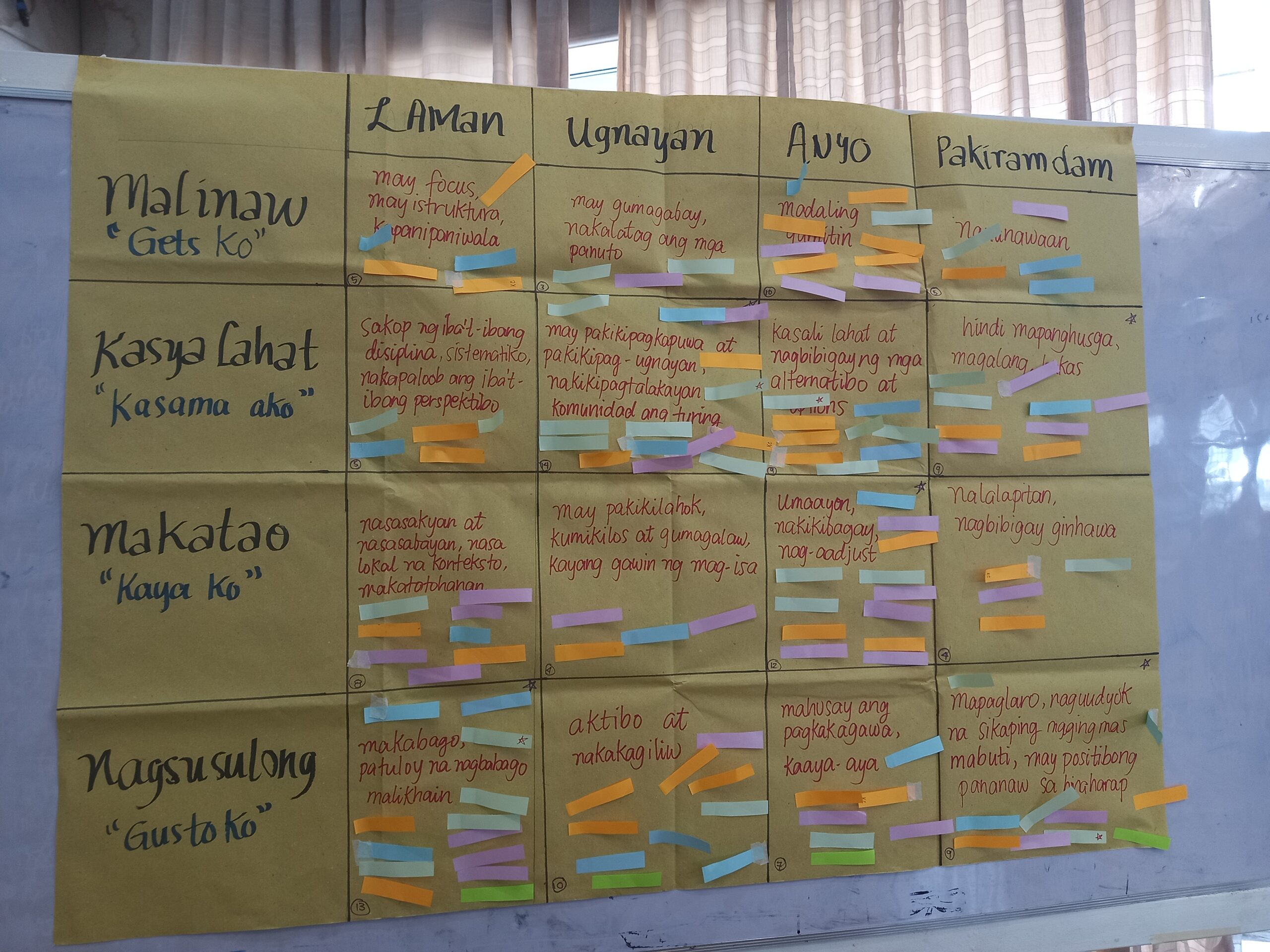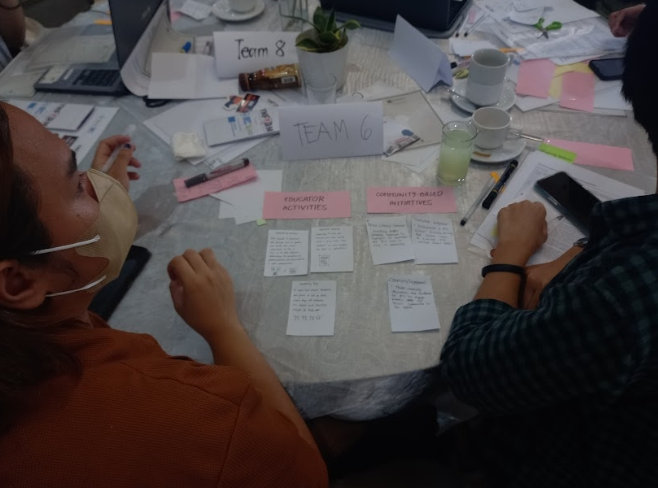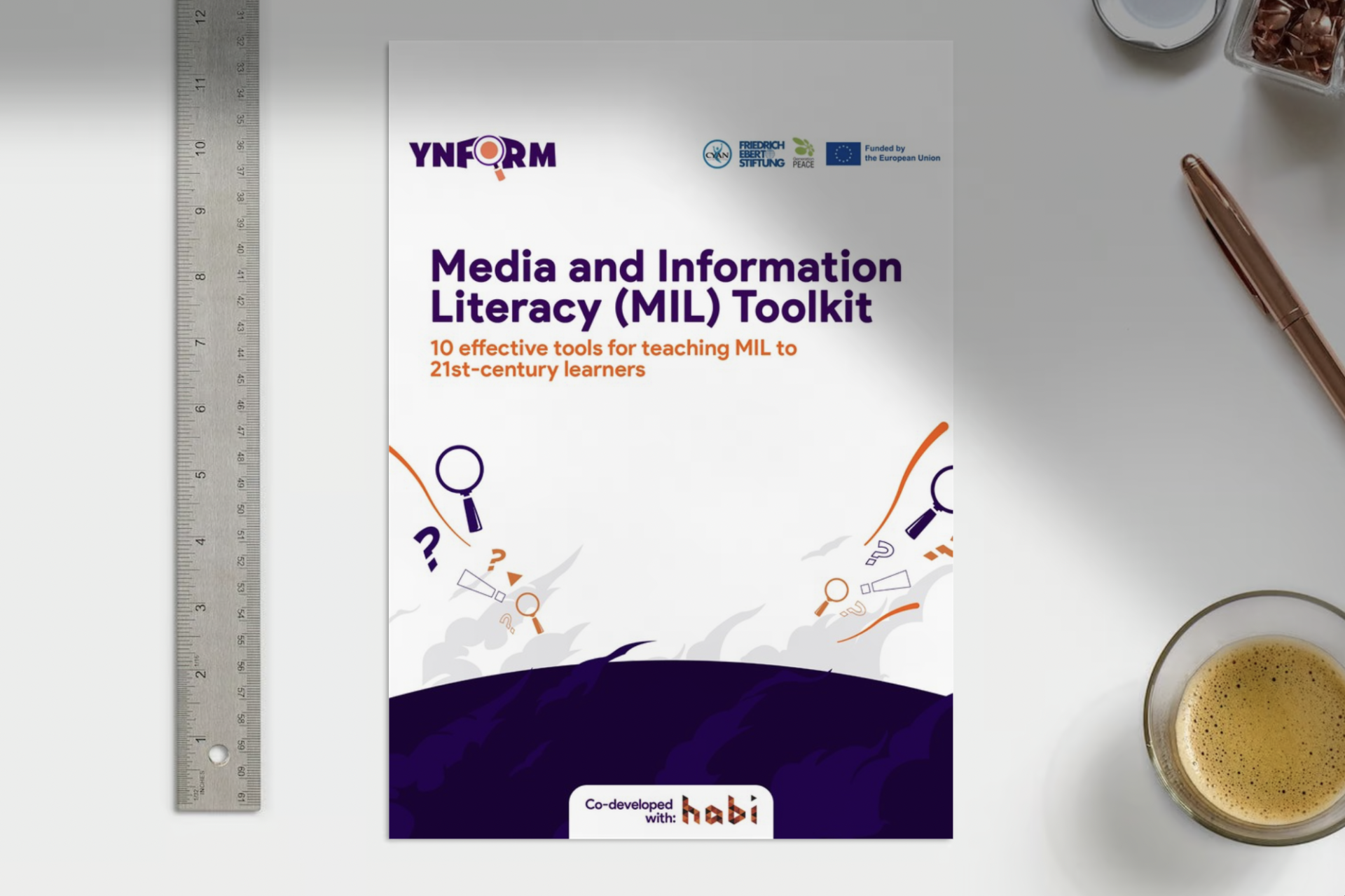Media and Information Literacy (MIL) is a critical subject that teaches students how to interpret and interact with information materials – but with the lack of technology resources and MIL expertise, how can we support teachers on teaching media and information literacy to young students today?
This has been the primary problem our teachers and youth leaders identified during our co-design workshop. Together with teachers and youth leaders, we co-created a draft Media and Information Literacy toolkit that their partner schools and communities of CYAN can implement. In Habi, we give great emphasis on co-creation, leveraging ownership, and personal stakes. Following the design thinking process, the workshop contained the following elements:
- Context setting and empathy for learners
- Brainstorming ideas
- Building prototypes
- Gathering feedback and conducting user tests
Context Setting and Empathy for Learners (Himayin)
Before the co-design workshop, Habi created a workspace to create their superhero profiles and reflections on the MIL research key findings as a pre-work assignment for the participants.
During the co-design workshop, we guided them through a visioning exercise to dig deep into their visions of what a successful MIL education looks like, as well as further conversations on the MIL research and provided a space for questions and insights on the research findings previously conducted by CYAN. A participant proudly shared, “Yung quality ng education natin ang magigisng susi para sa isang well-informed communities, para rin umikot ‘yung impormasyon sa iba’t-ibang komunidad.”

A participant sharing his insight on the MIL research
Brainstorming of Ideas (Ambagan)
There is strength in diversity. With our participants coming from rich backgrounds, instead of dividing the teachers and the youth leaders into separate groups, we created groups containing at least one teacher or youth leader, which allowed space to share common struggles and develop common ideas for a MIL tool.
Before creating their toolkit, we shared Habi’s design principles (Malinaw, Makatao, Kasya Lahat and Nagsusulong), and gave each of them four (4) stickers to vote on which design principles to prioritize and keep in mind during the creation process.

Design principles the participants agreed to focus on in creating MIL teaching tools
Aside from prioritizing design principles, participants were introduced to the SHOES (Strengths, Hopes, Obstacles, Everyday Activities, Spaces) Framework to develop empathy towards the intended users of the MIL toolkit for a contextualized approach when they start the creation process. A participant shared, “imaginine natin na tayo na ‘yung community! Ano dito pinaka bet natin?”
Building Prototypes (Bumuo)
Now working in groups, participants built the draft versions of their toolkits. A desk research activity was also introduced: to build on existing MIL efforts and get inspiration from them. Habi also created a tool container for them, directing their work into three containers: a module or activity, a project, or a story.

Co-design workshop participants building a prototype of their MIL teaching tool
Gathering Feedback and Conducting User-Testing (Ipakita)
With their ideas and drafts now ready for feedback, participants did a lightning round of presentations, received feedback from their co-participants on how to refine their tools, and shared appreciation for each other’s works.
The prototyping and feedback process had been done twice; during the second day of the workshop, Habi and CYAN deemed that a much-refined toolkit could be created when they had guidance from us. We joined each group and offered our insights, while still providing the space for a sense of ownership from the participants.

Participants sharing their prototypes (left) and sharing feedback to their fellow participants (right)
At the end of the co-design, we developed 10 MIL teaching tools that Habi further packaged into one cohesive MIL Toolkit.
Interested in championing co-design as well? Tara, work with us! Send us a message at kumusta@habieducationlab.org and let’s exchange ideas! 💡





